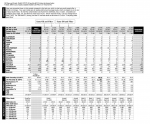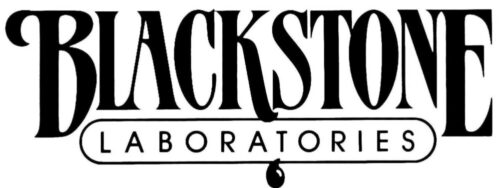FRAM XG 7317 (1)
- 24/23/16 @ 7634 miles
- 24/23/15 @ 12,045 miles
- 23/23/14 @ 6230 miles
- 24/21/16 @ 219 miles

O.K. I'm lost.
This looks like good information and an interesting thread, but I have NO idea what you all are discussing and why it's important? Please enlighten me?
Ed

They are ISO Cleanliness codes:

Particle Count Test | Blackstone Laboratories
www.blackstone-labs.com
I forget where I picked this one up, probably was here at BITOG.
You might note that even though the best results were by far from the Mobil1 filter under the UOA column dated 12/09/08 (that particle count was four times lower than the highest, and twice as low as several others), the wear metals picked up by the UOAs themselves hardly varied at all, in terms of ppm/000 miles.
I forget where I picked this one up, probably was here at BITOG.
You might note that even though the best results were by far from the Mobil1 filter under the UOA column dated 12/09/08 (that particle count was four times lower than the highest, and twice as low as several others), the wear metals picked up by the UOAs themselves hardly varied at all, in terms of ppm/000 miles.
View attachment 25735
Am I missing something here, like a kidney loop hiding somewhere ON this engine? The counts are far from the above on filters that are great ........but not that great???
Am I missing something here, like a kidney loop hiding somewhere ON this engine? The counts are far from the above on filters that are great ........but not that great???
I don't understand your question.
I'm going to go out on a limb and say he's wondering why the particle counts on that that report seem to be quite a bit better than we see here.
My hypothesis is that it is quite a bit easier to create a lower particle count with sampling method vs high, assuming normal standards of sampling cleanliness are followed. Particularly if I'm planning to request a PC, I pull the sample basically as fast as I can get around the front of the car and open the hood to do it. My theory is that as soon as the engine stops the particles begin to fall out of suspension. How long I guess is the question so if i pull it from the drain stream vs a sample pump and it takes 30 minutes to pull the under tray is that PC comparable to one that was pulled from a sample pump within a minute. I postulate that it is not. However relative performance within one persons given sample method should be valid.
I'm going to go out on a limb and say he's wondering why the particle counts on that that report seem to be quite a bit better than we see here.
My hypothesis is that it is quite a bit easier to create a lower particle count with sampling method vs high, assuming normal standards of sampling cleanliness are followed. Particularly if I'm planning to request a PC, I pull the sample basically as fast as I can get around the front of the car and open the hood to do it. My theory is that as soon as the engine stops the particles begin to fall out of suspension. How long I guess is the question so if i pull it from the drain stream vs a sample pump and it takes 30 minutes to pull the under tray is that PC comparable to one that was pulled from a sample pump within a minute. I postulate that it is not. However relative performance within one persons given sample method should be valid.
They seem to be all the same given all the variables. Quality of manufacturing would be the biggest difference like the Hamp, it just looks quality. ....
https://www.bobistheoilguy.com/foru...-miles-with-uoas-and-pcs.255163/#post-4132078
The data in this link is interesting for many reasons.
1. It refutes one of the few efficiency over time filter charts that circulates here that shows efficiency decreasing over time, till just before bypass sets in.
